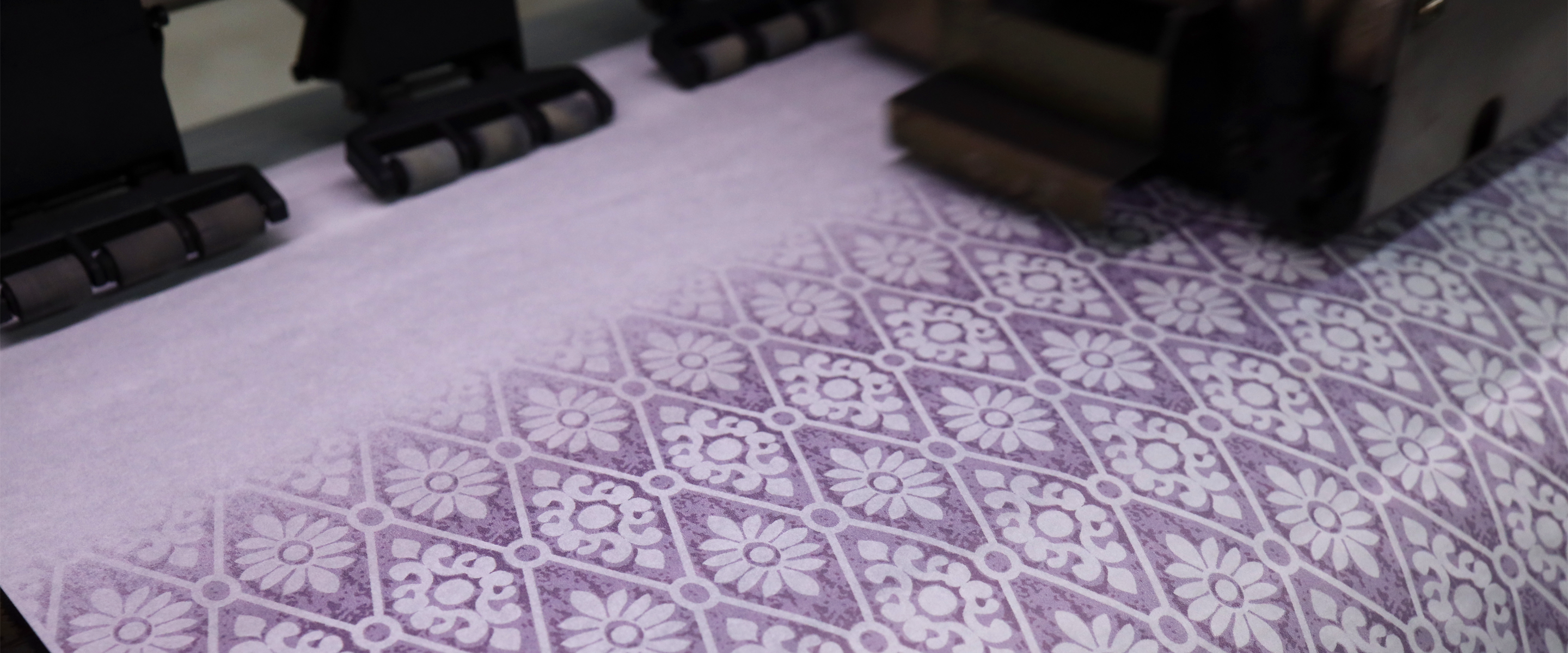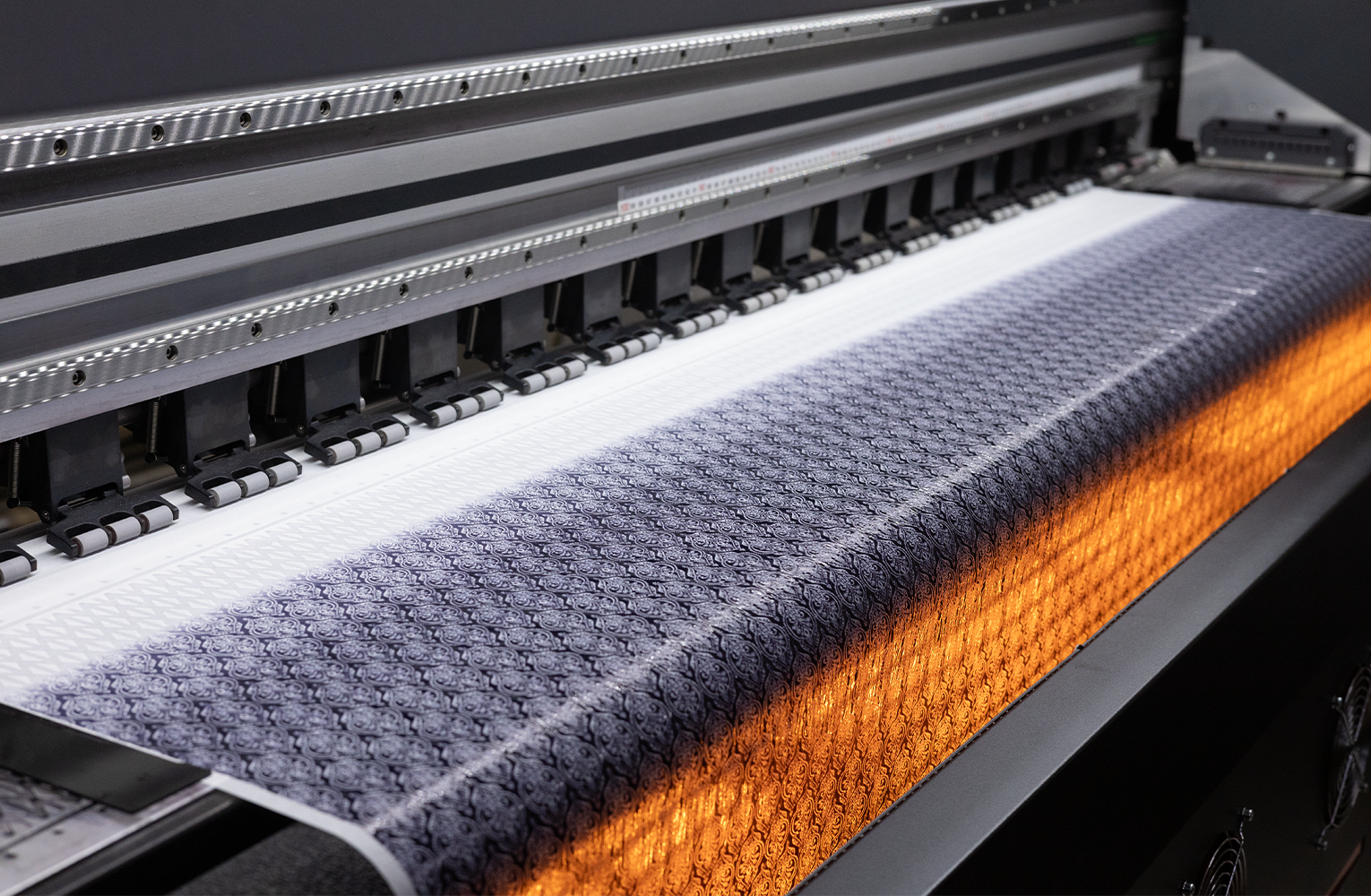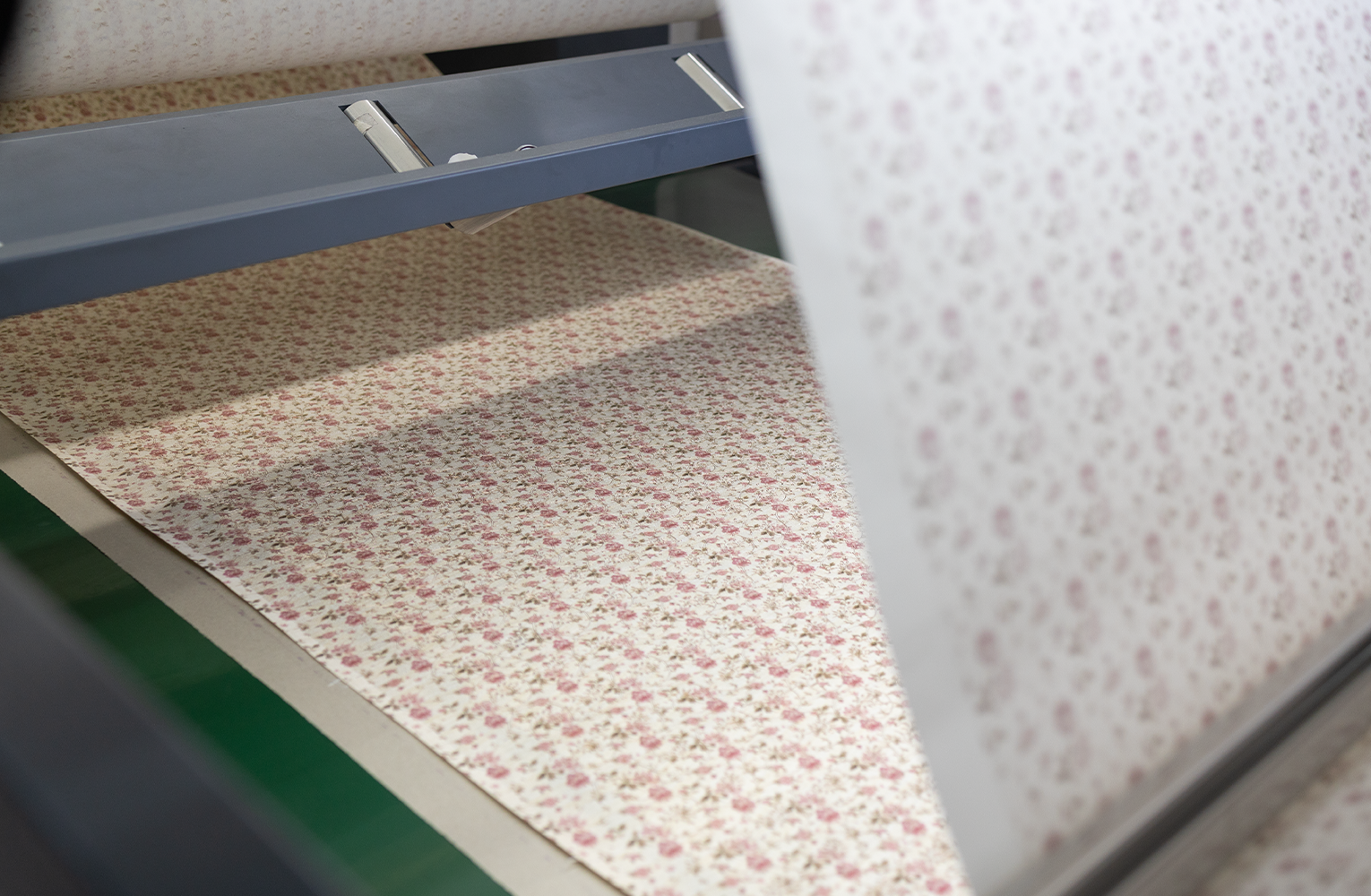Digital Printing - Crafting Endless Possibilities
Welcome to the vibrant world of digital printing, an innovative blend of technology and artistry revolutionising the printing landscape. Digital textile printing employs digital ink-jet technology to imprint vivid designs on various types of fabrics. This method allows for precise and easy reproduction of any design onto textiles, marking a significant advancement in the textile industry.
Digital textile printing enhances design quality and meets the increasing demands for innovative textile applications without the need for screens or colour restrictions. It is particularly well-suited for producing intricate 3D designs. Additionally, this versatile printing technology can be applied not only to fabrics but also directly to garments, such as sarees and kurtas, opening up a wide range of creative possibilities.
Printing designs on fabric has become as straightforward as printing on paper, thanks to advancements like dye-sublimation printers. These printers use heat to transfer images onto fabric digitally. A crucial step in this process is fabric pre-treatment, ensuring the fabric effectively retains the ink and supports a variety of colours.
This innovative approach marks a significant departure from traditional fabric printing methods. At Manyavar, our exceptionally talented team of designers create innovative prints that are incorporated into our collections of kurtas, jackets and more.
Here’s a dive into the advancements and advantages that underscore digital printing’s significant role in modern publishing and design.
Evolution of Digital Fabric Printing
The history of textile printing in India dates back thousands of years, with textile design printing historically serving as an emblem of cultural and economic significance. By the late 1980s, advancements in printing technology, particularly the emergence of colour inkjet printers, began to play a pivotal role in the production of digital fabrics for the commercial market.
The journey into modern digital textile printing began in 1990 with the advent of large inkjet printers. Initially, these printers were not favoured for fabric printing due to the light sensitivity of the inks, which made them better suited for paper than textiles.
However, as technology progressed, the landscape of digital textile printing evolved significantly. Large corporations developed specialised ‘digital textile printing machines,’ also known as "digital printers," capable of handling various materials including paper sheets, rubber, canvas, and fabrics.
This marked the official birth of digital fabric printing. With this foundational understanding, let’s delve deeper into the specifics of this transformative technology.
Digital Fabric Printing Process
1. Pre-treatment: Fabrics are treated with special solutions to enhance ink absorption and adhesion.
2. Printing: Specialised inkjet printers apply precise ink droplets to the fabric.
3. Post-treatment: Techniques like steam, dry heat, or pressure are used to fix the colour, ensuring the durability of the design.
Benefits of Digital Fabric Printing
Digital fabric printing shines in its ability to reduce waste. Unlike traditional screen printing, which requires large runs to be cost-effective, digital printing offers the flexibility of printing minimal quantities—down to a single metre—thus significantly reducing fabric and ink waste. Furthermore, this method is more eco-friendly, often using water-based inks devoid of harmful chemicals, unlike the hazardous Plastisol used in some traditional settings.
Versatility Across Materials
Beyond textiles, digital printers can apply images to diverse materials such as ceramics, metal, and even food. This versatility opens up endless possibilities for customisation, from elegant garments to decorative edibles.
Environmental Impact
Digital printing eliminates the need for printing plates and reduces chemical usage, further decreasing its environmental footprint. Some printers use vegetable-based inks, promoting sustainability.
Tailoring to Fabric Needs
Digital printing isn’t one-size-fits-all; it requires consideration of fabric type, intended use, volume, and time constraints. These factors determine the choice of ink and printing method to achieve optimal results.
Rapid and Flexible Printing Solutions
Digital printing meets the demands of a fast-paced world with its capability for rapid production and small batch printing, making high-quality printing accessible to all. With improvements in print quality, digital outputs can now rival or surpass traditional methods.
Personalisation Through Variable Data Printing
A standout feature of digital printing is its ability to customise each print with variable data, ideal for personalised marketing and unique applications.
Global Reach and Future Prospects
With its widespread popularity and adaptability, digital printing is a boon for small businesses worldwide, offering affordable, high-quality printing solutions. As technology progresses, digital printing is poised to introduce more innovations and opportunities.
Digital textile printing is rapidly emerging as the most dynamic segment within the textile machinery sector. An increasing number of printers are transitioning from traditional methods to digital ones, drawn by the numerous benefits this technology offers. Digital textile printing is not only cost-effective but also highly efficient.
This method significantly reduces the fixed costs associated with the production process. It allows for designs to be created and modified digitally with ease, facilitating quick sampling and short production lead times. Additionally, digital textile printing achieves exceptionally accurate designs with limitless versatility and an endless palette of colour combinations.
Another significant advantage of digital textile printing is its contribution to sustainability. It minimises waste and eliminates the use of nickel in fabric treatments. Given these benefits, digital textile printing has earned widespread approval and is seen as a sustainable and effective choice in the textile industry.



